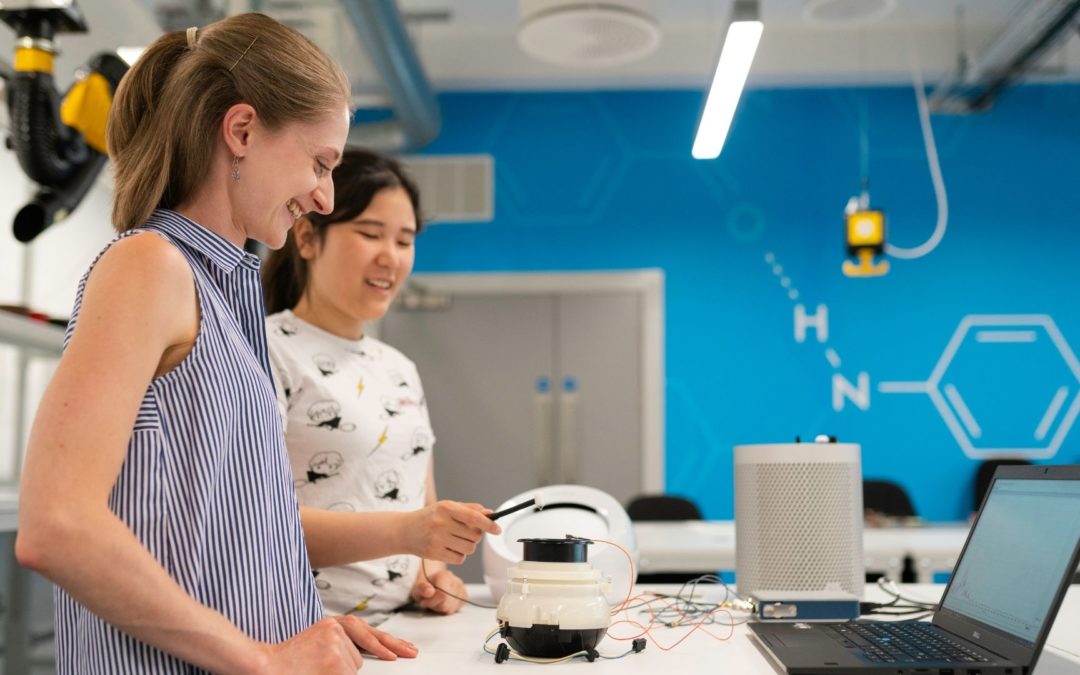Product vision is a critical component of the product design and development cycle. The designer has to consider several aspects such as usability, aesthetics, functionality, etc.
There are various stages involved in the product design and development process. Each stage requires specific skills and knowledge. For example, the initial idea phase involves brainstorming and talking with people who have special insight about the industry for your future product.
The product design and development processcan be divided into three phases – concept generation, design and development.
In this video, we will discuss all these topics in detail. We’ll look at how much time each stage takes and what you need to do to make your product successful.
Concept Generation
This is where you come up with an idea that can be turned into a product strategy. You may use any method to come up with a product idea including mind mapping, whiteboard discussions, user interviews, surveys or even focus groups.
Ideas are like babies. If you want yours to survive, they have to be taken care from day one. That means you need to provide them with food, water, air and love.
You see, if you don’t give ideas enough attention, they won’t grow well. So, make sure you pay attention to every single aspect of your idea to create product specification.
What is product specification?
A product specification is derived from the product strategy, it is a document that describes a product in terms of its features, benefits, functions, performance characteristics, quality, price, availability, warranty, specifications, packaging, size, weight, color, materials, components, accessories, operating instructions, maintenance requirements, safety information, compatibility, and other relevant details.
It also includes the target market for which the product was designed.
The most important part of the product specification is the feature list. It contains the detailed description of the product features.
Products Design
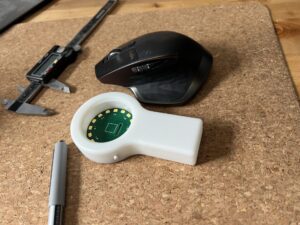
Picture of the CloudGauge prototype being fitted for new electronics
Once you have an idea, product teams use the product specifications to start turning it into a functional and attractive product. In other words, you need to design it. For physical products it is a must to start with industrial design first start with sketches from concepts and transition into professional product renderings.
What are new product renderings?
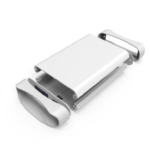
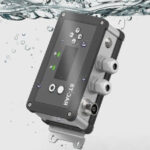
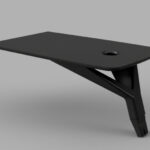
Pictures of rendering examples
New product renderings show your potential customers and investors what your product looks like. It helps them understand its appearance better. Also, it gives you an opportunity to test their reaction to different elements on your product.
For a physical and digital products you will want to pay special attention to the user interface.
What is a user interface?
A user interface (UI) is the set of controls and visual indicators that allow users to interact with the physical product and or software applications. A good UI is usually based on a user experience design or human-centered design.
What is Human-centered design?
Human-centered design is about designing products that meet people’s needs and wants. It focuses on understanding the end-user behavior and then creating a solution that meets those needs.
The next step in the product design process is to get customer feedback from real users about your product. User testing allows you to find out whether people actually like your product.
At this point, you can also add more features to your design. You can ask for feedback again from potential customers.
The product design process is a back-and-forth between the industrial design and the customer feedback for product success before moving forward.
From the rendering product designers usually start further implementing the industrial design and start doing rudimentary space claims.
Product Designers
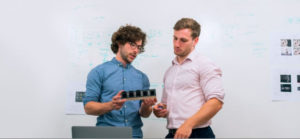
Product designers are responsible for creating the look and feel of a product. They use their creativity and technical skills to create products that are visually appealing, functional, and meet customer needs. Product designers must have an understanding of design principles, materials, manufacturing processes, user experience design, ergonomics, and more.
Product designers work closely with engineers to ensure that the product meets all specifications outlined by the client. Also a good product Designer will give options and lighten the client on different possible uses implementations of the future product.
What is a space claim?
A space claim is a document that describes your product in terms of size, shape, weight, color, texture, etc. This helps product designers and product managers and product teams to understand sizing and dimensions.
Once you feel comfortable with your design, you can move onto the next phase.
Product Development
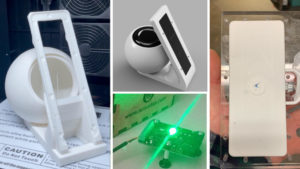
Finally, once you have designed your product, you will need a product development team you need to develop it. Product developers that may include mechanical or electrical and/or software engineers will create circuit design, enclosure design, firmware and software programming, graphic design, web design, app design, etc.
When implementing your product development, you need a plan for making changes. Otherwise, you risk spending too much money without getting anything in return.
That’s why it’s very important to test your main product ideas and assumptions early on. You can start by creating a rapid prototype for mockup version of your product.
These are all questions to consider in the planning phase since they will help guide you through not only your product development process but also your brand positioning and marketing strategy.The packaging, labels, and overall quality of your materials should be considered as well before you continue to the sourcing and costing stages.
The product development process can take anywhere from a few weeks to several months, depending on the complexity of the product. It is important to plan ahead and set realistic timelines for each step in the process.
Once you have completed the design and development stages, it is time to move onto manufacturing. This includes finding suppliers, negotiating prices, and setting up production lines. You will also need to consider quality
Product development cycle
The product development cycle can take anywhere from months all the way up to two or more years depending on the complexity of the product. It’s very important to have a solid concept development strategy with feedback from potential clients. Functional products, including Internet of Things(IoT) devices will include physical hardware and software-based apps and or web apps parts to them that need time to develop an exceptional user experience.
The first step in the product development cycle is researching customer needs and creating a design that meets those needs. This includes understanding user requirements, needs and wants. It is all about finding out what problems you are solving for your client whether it’s saving time money or any other pain points. Also, at this stage, it’s important to do a competitor analysis, and to see how your product can be a better fit for your future client. This includes doing a deep dive into market analysis. By doing this, you can create a better product strategy before building anything. This also helps to establish the potential customer base and inform further the concept development process.
Once all the specifications are defined it is a good time to develop user journey maps. This with sometimes call story based product development. Only after all that a rapid prototype will be made to understand the user experience with some or any potential problems that the product may have.
What is a rapid prototype?
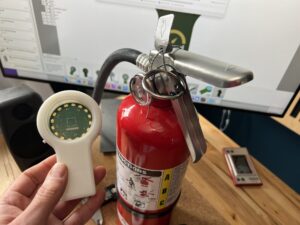
A rapid prototype (or quick prototype) is a physical representation of your product. It helps you validate your ideas quickly and efficiently.
Product design teams use rapid prototypes to understand the basics they are usually made of plastic, wood, cardboard, foam board, plaster, clay, metal, etc. They allow you to explore different options and get feedback from potential users.
For example, when you are developing a new website, you can create a few versions of it and ask visitors to rate each one. This allows you to identify which features work best and which ones need improvement.
If you are working on a hardware product, you can create a 3D model of it and then print it. This gives you an opportunity to check its size, shape, weight, durability and so on.
As you’re working on your rapid prototype new information is going to become evident along with new opportunities. This is where you will want to go back to your design stage and make changes.
After some changes have been made from your design to your new rapid prototype you can continue on to do the product development leading towards some thing that could be very close to functional prototype.
What is a functional prototype? A functional prototype is a fully-functional replica of your product. It includes all the components needed to run the product.
This is a great way to test your product before building it. It allows you to see how it works, what kind of problems it has and what improvements you should consider.
If you are designing a mobile phone, for instance, you might want to create several models of it. Then, you can invite customers to try them out and see which one they like most.
In addition, you can conduct usability tests. For this purpose, you can ask your target audience to use your device and record their responses. You can even ask them to share their thoughts about certain aspects of your product.
Functional prototyping is not just limited to products. You can also use it to test websites, apps, games, interfaces, marketing campaigns, business processes, etc.
The process of creating a functional prototype is similar to the process of creating a rapid prototype. The only difference is that a functional prototype is more complex than a rapid prototype.
Why do we need a functional prototype?
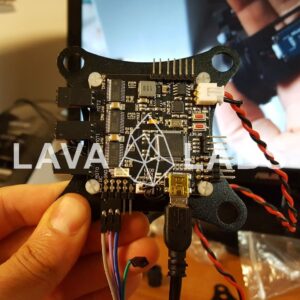
Functional prototyping is a necessary step in any product development process. Here are some reasons why you should invest time into creating a functional prototype:
By far the most important reason to have a functional prototype is to test that’s market fit and user experience by getting user feedback.
It saves you time and money. If you don’t have a functional prototype, you won’t know if your idea is viable until after you’ve spent a lot of time and money on it.
By testing your product early on, product teams can save a lot of time and resources.
You’ll avoid making costly mistakes. When you build a functional prototype, you’ll be able to find issues such as compatibility errors or poor user experience long before you start building the actual product.
It’s easier to change things. Once you have created a functional prototype, you can easily make adjustments to your product without having to rebuild it.
Product teams gain valuable insights. Creating a functional prototype enables you to gather real customer data and learn about their needs and wants.
How to create a functional prototype?
There are many ways to create a functional prototype. Some require specialized equipment while others can be done using simple tools.
Here are some examples of functional prototyping methods:
Use an Arduino board. An Arduino is a small computer that plugs directly into your computer via USB. You can program it using software called Scratch.
Create a physical mockup. In this method, you create a model of your product using 3D printing technology.
Build a digital mockup. With this method, you take screenshots of your website or app and then recreate those screens on a computer.
Build a paper prototype. In this case, you print out a blueprint of your product and bring it to life by assembling it yourself.
Build a cardboard prototype. This method requires you to assemble a cardboard version of your product.
Build a wooden prototype. In this case you first draw the shape of your product on a piece of wood. Then, you cut it out and assemble it.
Use a 3D printer. A 3D printer creates three-dimensional objects from digital files. It can also create prototypes.
Use a laser cutter. Laser cutters work similarly to 3D printers but instead of using a digital file, they use a sheet of material.
Use a CNC machine. CNC machines are used to carve designs into metal or other types of material. They’re often used to create prototypes.
The last part of product development that comes after a functional prototype has been made and thoroughly tested is design for manufacturing.
What is the design for manufacturing? (DFM)
Design for Manufacturing is a term used when designing products specifically for manufacturers in mind. DFM involves taking all the information gathered during the previous stages of product development and turning them into a set of instructions that will help manufacturers produce the final product. This will include digital fabrication files.
What are digital fabrication files?
Digital fabrication files are instructions that tell a manufacturer how to build the product. These instructions are usually written in code. The most common type of digital fabrication files are CAD files.
CAD stands for Computer Aided Design. CAD files contain specifications for the product including its dimensions, materials, and components. CAD files are typically used to create blueprints for manufacturing.
Why do I need digital fabrication files?
Manufacturers want to know exactly what to expect when they receive a new order. Digital fabrication files give them this information so they can plan accordingly.
For instance if you need to use a laser cutter in the manufacturing process to cut metal and/or plastic for molding and pressing you will need 2D vector files. Or if you need plastic enclosures made you will need digital fabrication files from a CAD program to create a mold from which plastic enclosure parts can be made.
After design for manufacturing is complete and you have your digital fabrication files, contract manufacturing company can start producing samples for you to further test. Along with user experience and functionality testing this is the part to get mandatory certifications done such as FCC.
What is FCC testing?
FCC testing is an acronym for Federal Communications Commission. This is the agency that regulates radio frequencies in the United States.
Radio frequency is a very broad category that includes everything from AM radio waves to cell phones. Radio frequency emissions are measured in terms of power output. Power output is measured in Watts.
In the US, the FCC tests products that emit radio frequency energy. For example, cell phone antennas must pass FCC tests before they can be sold.
How does FCC testing work?
Before a product can be released to consumers, it must go through FCC testing. During this stage, the product undergoes several tests. Each test measures different aspects of the product’s performance.
These tests are designed to ensure that the product meets certain minimum standards. Products that fail these tests cannot be legally marketed or sold.
This is why it is important to make sure that your product passes FCC testing. If it doesn’t then you might not be able to sell it.
If your product fails one of the tests, you will be required to fix any problems found in the test. You may also be asked to pay a fine.
How do I know if my product needs FCC testing?
There are two ways to find out whether your product needs FCC testing. First, you can check the FCC website. It lists the products that require FCC testing. Second, you can ask your customer service representative at the FCC office. They should be able to answer your question about FCC testing.
Once your internal testing and FCC testing is completed you can start to manufacture your new product. It is a good idea and best practice to start small and do a limited quantity run for final testing before doing mass production. During the small scale production run you can learn about assembly, material and parts sourcing before scaling up to full production.
How much time to get first product samples?
After design for manufacturing is complete, it takes approximately 1-2 months for the first sample to be ready for testing. The actual time depends on many factors including but not limited to the complexity of the product, number of components, materials used etc.
Conclusion
Successful products are built by experienced product design teams and product development team that keep going even when prototypes don’t yet work. Product managers are usually directly involved with every stage of development talking directly to the product design teams, manufacturers suppliers, end clients and all the stakeholders to get feedback. Product success is directory related to how good the user feedback loop is in product design and product development process and throughout the entire product life cycle. The development doesn’t usually stop when the product hits the market the product life cycle is just getting started. After a successful launch, there are always things to be improved upon and this is where minor improvements can make all the difference in getting new clients and supporting existing ones.

